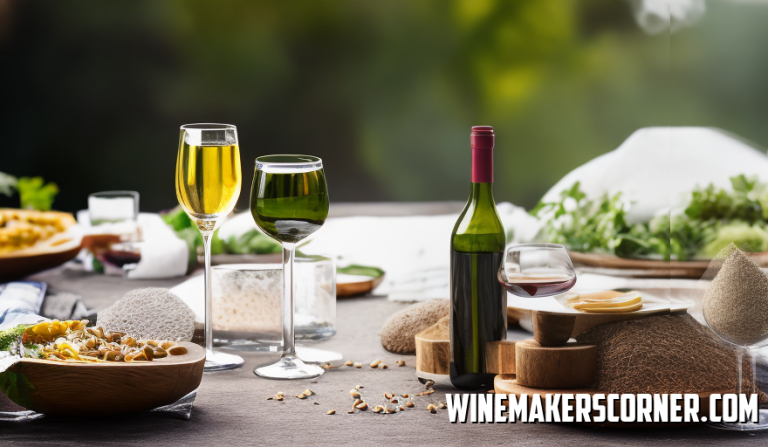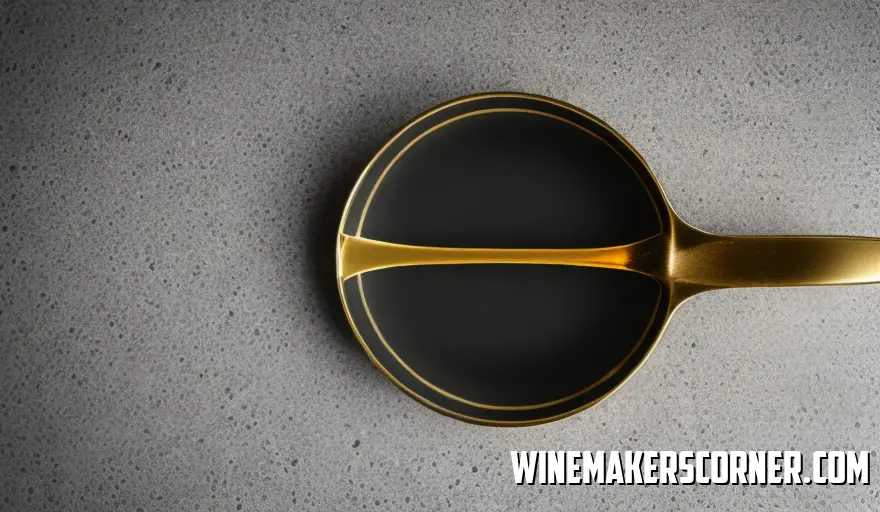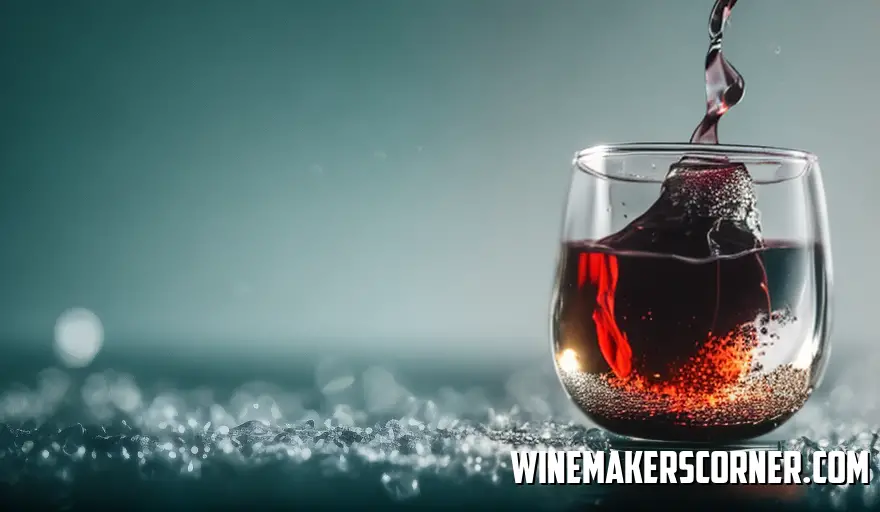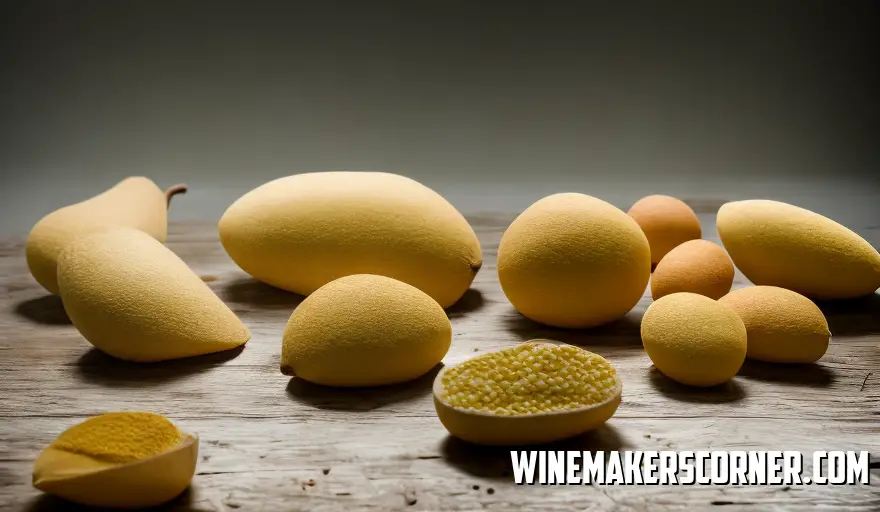For centuries people have been captivated by the magic of wine – its aroma, taste, and ability to bring people together. But many don’t realize that there’s more to this beverage than meets the eye (or tongue).
Enter yeast – a microscopic hero vital in transforming grape juice into a complex and delicious drink. In this article, we’ll delve deeper into fermentation, explore different types of yeast and their unique properties and learn about their impact on aging potential.
So grab your glasses as we embark on an intriguing voyage through nature’s most fascinating processes.
Table of Contents
The Role of Yeast in Fermentation
Winemaking is an age-old process combining historical traditions with scientific advancements that have led to marvels like no other- including the magic we call fermentation, which wields an unsung hero: yeast.
Yeast is pivotal in converting seemingly mundane grape juice into an ethereal and complex masterpiece known as wine. It’s hard to believe that this tiny organism exists all around us- on vines, equipment, and even floating in the air! When grape juice meets this omnipresent fungus upon crushing and pressing grapes, fermentation occurs whereby yeast consumes sugar, resulting in alcohol and carbon dioxide.
But yeasts are not created equally – different strains possess unique characteristics imparting distinct flavors and aromatics during fermentation. Some produce fruity esters; others bring forth spicy phenols or rich buttery notes- here lies the importance of choosing wisely!
Saccharomyces cerevisiae stands out due to its unparalleled ability to convert sugar to alcohol -a deciding factor when it comes to high-quality wines with optimal alcohol levels. While wild yeasts can add complexity and nuance, they pose significant hazards such as unpredictable fermentation outcomes or unwanted off-flavors. Winemakers rely on carefully chosen inoculated yeasts that bring consistency in flavors and desirable traits reflective of their distinct choices during juice production. Temperature regulation is crucial in the wine fermentation process. For example, warm fermentations (15 20°C) enrich white wine flavors with fruity notes, whereas cool fermentations (12 15°C) preserve delicacies and subtleties.
Higher temperatures (20 30°C) required during red winemaking bring additional body and depth of color by extracting more pigments from the grape skin. It’s a complex choreography between yeast and its environment, where balancing the equation is vital for the highest quality resultAfter fermentationtion, leftover yeast cells known as lees can smooth out certain white wines like oaked chardonnay, creating creaminess and adding texture. What’s also remarkable is that yeast doesn’t stop influencing wine products after fermentation.
Through malolactic fermentation (MLF), lactic acid bacteria turn harsh malic acid into softer lactic acid, ultimately bringing complexity and roundness to red wines and select whites – a process often mistaken ken for being driven by yeasts. In summary, yeast is the key to unlocking grapes’ full potential.
This mystical ingredient can transform ordinary fruit into a harmonious fusion of flavors and fragrances.
As we celebrate with our glasses held high, let us acknowledge that yeast is the true hero behind winemaking.
Types of Wine Yeasts
Regarding wine, making little things can make a big difference – like yeast! This microscopic organism unlocks a world of flavors and aromas in your favorite vino.
Saccharomyces cerevisiae is one particular yeast strain that plays a vital role in wine fermentation. This superstar is found naturally on grape skins and converts sugar into alcohol during winemaking.
And with over 1,000 strains identified (and countless more yet to be discovered), S. cerevisiae gives winemakers immense creative freedom when crafting unique wines. However, non, Saccharomyces yeasts like Hanseniaspora, Candida, and Metschnikowia shouldn’t be overlooked either. These wild yeasts may not ferment quite as efficiently as their more famous counterpart, but they bring a multi-dimensional flavor profile to wines through biotransformation.
Winemakers take pride in their craft – from nurturing vines to coaxing their best flavors through careful fermentation techniques. Spontaneous fermentation is a must-try approach for some purists seeking maximum authenticity and intrigue. This risky technique eschews controlled yeast strains instead of relying solely on natural ones found on grapes or within a winery’s walls for unique results every time. Others may prefer inoculated fermentations using tailor-made yeast blends to ensure consistent precision and flavorful profiles across batches. Either way, it’s hard to deny the indispensable role of microscopic marvels like yeast in creating unforgettable wine experiences.
The Science Behind Yeast Strains
Uncovering the mysteries of winemaking is incomplete without a deep understanding of what yeast brings. Despite being mere microorganisms at first glance, these tiny critters have an immense impact on transforming grape juice into liquid gold. We gain new insights into what sets each bottle apart by delving into different yeast strains and their respective contributions to flavor profiles, aromas, and overall quality levels.
In essence, it all comes down to yeast—the single-celled organism that falls under the fungi kingdom—that carries out fermentation reactions by eating away at sugar from grapes resulting in alcohol production along with carbon dioxide gas emission as byproducts. However—and here’s where things get exciting—not all yeasts are created equal; each type has its distinctive influence over wine characteristics! Due to its dependability factor, saccharomyces cerevisiae up the most traction amongst winemakers globally. In contrast, others prefer using indigenous yeasts found naturally on grape skins—for an entirely different sensory experience here! It’s fascinating to reflect on the sheer number of yeast strains within one category alone – Saccharomyces cerevisiae – which approaches thousands! Yet, with such variation comes significant influence over critical factors like fermentation speed, temperature tolerance, and even resistance capabilities; for winemakers looking to achieve specific flavor profiles or textures in their wines, selecting the most appropriate strain is critical. For instance, some son to increase glycerol concentration during fermenting processes, enhancing viscosity and fullness on your palate. In contrast, others may release more esters or volatile compounds, granting fruity aromas depending on the varietal.
Excitingly enough, scientists have recently been experimenting with hybridized yeast strains that blend attributes from multiple species- proving innovative possibilities for creating fresh novel tastes while also streamlining efficiency for winemakers. And while it may seem risky, growing numbers of adventurous vintners are embracing wild or spontaneous fermentations placing faith solely in native yeasts in the vineyards- ultimately resulting in complex and unique nuances of flavor and aroma. In essence, comprehending yeast strains is indubitably necessary for crafting exquisite wines.
Exploring the vast range of yeasts enables us to grasp the complex interdependence between nature’s workings and human ingenuity that culminates in every singular bottle of wine. Like this, as you partake in your next sip, take a beat to acknowledge these infinitesimal wonders for genuinely animating our favored tipples!
Flavor Profiles Created by Different Yeasts
There’s something truly magical about the art of winemaking – it’s steeped in ritual and tradition with endless nuances, And one crucial player in this enchanted world is yeast! It’s incredible how much impact these tiny organisms can have on shaping the flavor profiles of our favorite wines. Let’s delve into this spellbinding subject. Saccharomyces cerevisiae is the backbone of most wine fermentations, but there are countless different strains within this species that each contribute their unique characteristics to the final product.
For example, EC 1118 is a true champion that can withstand even less than ideal condition fermentation. Wines made using EC 1118 have bright fruit notes and delicate aromas that make you want to savor every sip.
But for winemakers looking for something more complex and layered than what EC 1118 provides, there’s D47! This yeast strain produces metabolic byproducts during fermentation that adds richness and depth to the finished wine.
If you’re drinking a Chardonn, adding D47, you might notice buttery notes or hints of spicy vanilla lingering on your palate – yum! These flavors come from implementation and ester production, which are all thanks to our little friends: yeasts! Winemaking isn’t just about also about artistry! One of the ways vintners express themselves is by choosing wild yeasts for fermentation instead of selecting from commercial strains. The results can be thrilling: unpredictable yet delicious flavors you won’t find anywhere else representing authentic expressions of place thanks to those indigenous yeasts. Nowadays, some adventurous winemakers are taking things even further by trying out less common varieties like Torulaspora delbrueckii or Metschnikowia pulcherrima. These “non Saccharomyces” yeasts can add mouthfeel enhance aromatic complexity, and contribute intriguing savory elements to a wine’s profile.
When you think about it, its incredible how much yeast selection influences a wine’s ultimate character.
Wild vs. Cultivated Yeasts
Wine lovers know that during the winemaking process, both wild and cultured yeasts are utilized, each bringing its magic touch to the final product-making process. Origin, behavior, and impact are some factors differentiating these microscopic organisms leading to an ongoing debate among winemakers on which one is superior.
They are supporting one side of this debate- Wild yeast, naturally occurring in vineyards, on grapes, and even in wine cellars- unpredictable and diverse yet adding a unique terroir-driven character to the wine created.
Proponents argue that using wild yeast brings an authentic taste of place,, directly linking the vineyard location and your glass.
Conversely, cultured or selected strains have been developed by scientists for specific characteristics; consistency being critical among such songs giving predictable fermentation outcomes and minimizing risks related to spoilage or stuck fermentations. Advocates find that using cultured yeast allows winemakers precise control over the type of wine made from one vintage year to another while maintaining stylistic continuity. Choosing wild and cultivated yeasts for winemaking can reflect different approaches among vintners.
Some appreciate the variability associated with working with naturally occurring yeasts as part of their artistic expression,. In contrast, others prioritize control over the fermentation process to achieve specific outcomes consistently. This field is marked by much exploration – winemakers may choose spontaneous fermentation or mix native yeast strains with cultured ones for differing effects. Ultimately, both types contribute distinctively to wine crafting through their unique flavors and qualities.
Deciding which type of yeast is best depends on factors such as grape variety, regionality, and desired wine style considerations. In summary, unlocking the mysterious magic of yeast holds vital importance when crafting exceptional wines, whether adding nature’s surprises through wild yeasts or striving towards precision with carefully cultivated strains; this secret ingredient shapes every bottle’s story – from the vineyard down until your glass is empty!
Fermentation Temperature and Its Impact on Wine
Fermentation temperature is an aspect of winemaking that should never be overlooked as it plays a critical role in yeast activity, shaping wines aroma, flavor profile, and overall quality. It’s an intriguing process that impacts wine vastly; let us explore further. Temperature control regulates fermentation rate since yeast behaves differently based on its environment; it ferments sugar into alcohol faster under higher temperatures than lower ones.
This disparity influences how flavors develop during maceration.
When making red wines like Zinfandel and Pinot Noir, warmer fermentation conditions can bring out robust flavors and aromas by allowing the extraction of tannins from grape skins while intensifying fruity notes, which contribute to the body of the wine positively. However, excessive heat can result in an unpleasant final product due to spoiled characteristics. A more relaxed environment like that found when fermenting white wines like Chardonnay or Riesling results in a crisper acidity level while preserving delightful floral notes feature of these varietals’ unique taste profiles.
Achieving this optimal condition requires refrigeration or temperature-controlled tanks. A complex blend of flavors creates the refreshing taste found in this white wine. The ability to choose and control yeast strains and fermentation temperatures separates great winemakers from average ones. When certain songs are matched with specific temperatures during fermentation, excellent results can be achieved during wine production.
Therefore mastering this winemaking aspect is essential when creating unforgettable wines with worldwide appeal. It’s through skillful manipulation of these variables that spin magic into every bottle – delivering remarkable experiences time after time.
The Art of Selecting the Right Yeast Strain
At the heart of winemaking lies an intricate dance between various elements where one secret ingredient takes center stage – yeast. For centuries skilled winemakers have endeavored to leverage these minuscule organisms’ power to craft wines that are nothing short but exceptional masterpieces demanding awe-inspiring creativity. The artistry in selecting the perfect yeast strain requires expertise, intuition, and experimentation – not just mere chance.
Yeast selection begins with analyzing grape variety and the desired end product recognizing that every grape features distinctive traits that require specific yeast strains’ utilization to bring out their full potential. The ultimate objective is to achieve a harmonious balance between fruit flavors and fermentation processes – an intricate process challenging even the most seasoned winemakers.
Winemakers have a broad selection of yeast strains available for exploration – from wild yeasts found on grape skins in nature to carefully cultivated varieties developed by expert scientists. Wild yeasts offer unpredictability, sometimes adding complexity to flavors but leading to undesirable outcomes in other situations.
Cultivated varieties provide greater control over consistency across vintages.
However, experimentation remains crucial in this artistic vision as there’s always something new that savvy winemakers can learn or discover when experimenting with novel yeast strains. Achieving specific flavor profiles and enhancing certain attributes are among the factors that prompt winemakers often blend different themes or use sequential fermentations when creating their offerings.
It’s worth noting that each vintner has a unique vision; hence trial and error comes into play when evaluating which technique works best for each case. Temperature significantly impacts yeast performance since some strains thrive in cooler climates while others favor warmer weather patterns – accounting for distinct fermentation characteristics affecting the wine’s outcome differently. Biotechnology innovations have expanded our understanding of yeast capabilities,, leading to custom-designed varieties crafted specifically for particular grapes or styles, thus offering endless possibilities within winemaking.
Ultimately, picking the appropriate yeast strain is an essential step towards unlocking the mystery behind every bottle of wine – an exciting journey driven by science and artistry that never fails to amaze us with its boundless potential.
How Yeast Affects Aging Potential
Despite its humble stature, yeast is an essential microorganism in wine-making with a profound impact on aging potential. This article’ll unravel the intricate relationship between yeast and wine aging.
During fermentation, yeasts convert grape sugars into alcohol, creating wines with varying flavor profiles, mouthfeel, and aromas depending on the strain used. But how do these characteristics influence wines as they age?
Aging potential depends significantly on three things: acidity levels, tannin structure, sugar content – each affected by yeasts to some extent. Yeast produces organic acids during fermentation which are integral to preserving freshness over time, and balancing acidity is critical for enhancing longevity.
Additionally, enzymes released from yeasts break down grape skins during fermentation stabilizing tannin molecules that bolster both structure and age-worthiness in wines. When considering a wine’s ability to age well, yeast is an essential piece of the puzzle – not least its sugar content.
Certain yeast strains are better suited to fermenting higher levels of alcohol, affecting how much residual sugar remains in the finished wine and consequently determining its lifespan. Autolysis is another critical factor that adds depth during aging, significant for Champagne and selects Chardonnays.
The importance of selecting the correct yeast strain cannot be understated; achieving strong aging potential requires balancing acidity and influencing tannin structures. It’s amazing how these tiny organisms wield so much control over our favorite wines as they develop over time – genuinely unlocking the magic of yeast adds another layer of admiration for this fascinating beverage.




